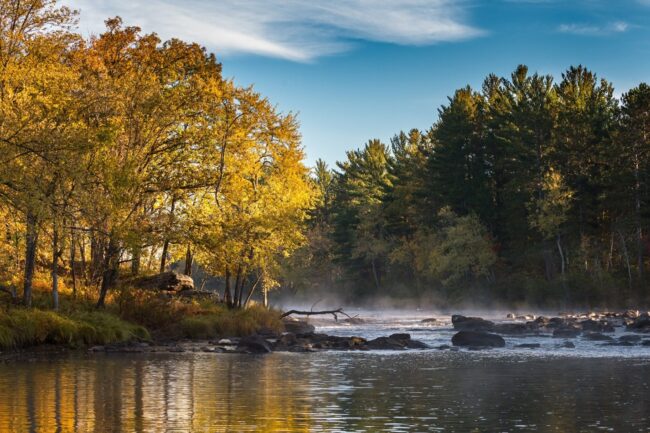Northern Minnesota, with its breathtaking landscapes, pristine lakes, and dense forests, is a haven for outdoor enthusiasts. From the Superior Hiking Trail to the Boundary Waters Canoe Area Wilderness, the region offers unparalleled opportunities to connect with nature. However, the very activities that allow us to enjoy these spaces also come with a responsibility to protect them. By fostering a culture of conservation and stewardship, outdoor enthusiasts play a critical role in preserving the region’s natural beauty for generations to come. As David Ohnstad observed during a recent expedition, the interplay between recreation and conservation demands a thoughtful approach.
Understanding the Threats to Northern Minnesota’s Wilderness
Northern Minnesota’s ecosystems are delicate and increasingly under threat from human activities. Deforestation, pollution, and climate change are among the primary challenges facing this region. The influx of visitors during peak seasons can lead to unintended consequences, such as soil erosion, habitat disruption, and the accumulation of litter in otherwise pristine areas.
The impact of invasive species, often inadvertently introduced by outdoor recreation, is another pressing concern. These species can disrupt native ecosystems, outcompete local flora and fauna, and even alter entire landscapes. Moreover, climate change has begun to shift weather patterns in the region, affecting everything from the health of forests to the water levels in its iconic lakes. As outdoor enthusiasts, understanding these challenges is the first step toward mitigating them.
The Role of Education in Conservation Efforts
One of the most effective ways to protect Northern Minnesota’s natural beauty is through education. Informing outdoor enthusiasts about the region’s ecological significance and the potential impact of their activities fosters a deeper appreciation for the environment. Programs led by local conservation groups, park rangers, and community organizations are instrumental in raising awareness about sustainable practices.
Educational signage along trails, at campsites, and in visitor centers also serves as a constant reminder of our shared responsibility. These signs often include guidance on how to minimize human impact, such as staying on designated paths to prevent soil erosion and properly disposing of waste to avoid contaminating water sources.
Beyond signage, workshops and volunteer opportunities provide hands-on experiences that encourage stewardship. Participating in trail maintenance, wildlife monitoring, or invasive species removal not only benefits the environment but also strengthens the connection between individuals and the landscapes they cherish.
Embracing Leave No Trace Principles
The Leave No Trace principles are a cornerstone of outdoor ethics and a powerful tool in preserving the beauty of Northern Minnesota. By adhering to these guidelines, outdoor enthusiasts can significantly reduce their impact on the environment. The principles emphasize respecting wildlife, minimizing campfire impacts, and being mindful of other visitors. Although they seem simple, these practices collectively make a substantial difference in maintaining the integrity of natural spaces.
For example, when camping in Northern Minnesota, it is crucial to select established campsites rather than creating new ones. This prevents habitat destruction and limits human encroachment into undisturbed areas. Similarly, using biodegradable soap and disposing of waste at least 200 feet away from water sources can help protect the delicate aquatic ecosystems that are vital to the region’s biodiversity.
The Importance of Advocacy and Community Action
While individual efforts are essential, collective action can amplify the impact of conservation initiatives. Advocacy plays a significant role in influencing policies and securing funding for environmental protection. Outdoor enthusiasts can support organizations that lobby for the preservation of public lands, stricter regulations on pollution, and the mitigation of climate change effects in Northern Minnesota.
Community-driven conservation projects, such as reforestation campaigns and water quality monitoring programs, also rely on the participation of outdoor enthusiasts. These initiatives not only address environmental challenges but also foster a sense of community and shared purpose. When individuals come together to protect the landscapes they love, the results are often transformative.
Balancing Recreation and Conservation
Finding the balance between enjoying Northern Minnesota’s natural beauty and preserving it requires intentional effort. Outdoor enthusiasts must recognize that their presence in these spaces has an impact, no matter how small. This awareness is the foundation of sustainable recreation. Planning trips during less crowded times, adhering to park guidelines, and supporting local conservation efforts are ways to ensure that enjoyment of the outdoors remains sustainable.
It is also important to consider how we can give back to the places that offer us so much. Contributing to conservation funds, volunteering for cleanup efforts, or mentoring others in sustainable outdoor practices are meaningful ways to make a positive impact. These actions not only benefit the environment but also inspire others to follow suit.
A Call to Action for Future Generations
Preserving the natural beauty of Northern Minnesota is not just a responsibility—it is a legacy. The choices we make today will determine the condition of these landscapes for future generations. By fostering a culture of respect, education, and stewardship, outdoor enthusiasts can lead the way in ensuring that the region’s forests, lakes, and wildlife continue to thrive.
Northern Minnesota’s wilderness is more than a destination; it is a sanctuary that nourishes the spirit and rekindles a sense of wonder. Protecting it requires commitment and collaboration, but the rewards are immeasurable. Together, we can ensure that the splendor of Northern Minnesota endures, offering solace and inspiration for all who seek it.
